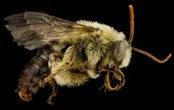Harmful Effects of Confusing bumble bee
A species of Bumble bees, Also known as Perplexing bumble bee
Confusing bumble bee stings can cause pain, swelling, and redness, with rare cases of severe neurological effects. Transmission occurs through self-defense stings, primarily by females. Most health issues are minor and self-limiting, but allergic reactions may require medical attention.
Is the Confusing bumble bee poisonous?
Does the Confusing bumble bee sting humans?
More about insect bites and stings (Symptoms, Prevention, Treatment, etc)
Harmful Facts About Confusing bumble bee









AI entomologist in your pocket
Scan QR code to download

